|
Sergeant Leonard heard the cries in the brush. He abandoned his post minutes before the yips began, and even then, he trusted his lightfoot roots to carry him over the marsh to where the child lay. He was certain everyone had evacuated; the militias were ready on the rooftops. Their intel was good, their scouts intact. Someone must have been left behind. His boots sink into dense muck and mud, noting the deer footprints that surrounded him. He checks the horizon once more, columns of ominous smoke rising. Must be the war party, I still have time. The cries sound again - someone is sobbing. "It's all right, little one! You can come out. It's just me." The sobbing stops, a choked reply comes shaking, "ArE yoU here TO KiLl mE?" Poor thing; must be scared all to hell. He sheathes his sword, holding his hands out to the brush. "No one's here to hurt you. See? Just a friendly halfling. Let's get you out of here and home safely." He flashes a warm smile. "What is it, Sergeant?" A call resounds behind him from the outpost. He turns. "Just a child. Don't worry, I'll get them..." A stench fills his nostrils. Pungent and rotting, like the bile that spills forth from a rancid stomach. The sergeant's heart drops as his hand grabs the hilt of his saber, a low rumbling chuckle vibrating the tall marsh grass surrounding him. Powerful, rotting jaws clamp onto his leg. They rend his plated greaves to ribbons and he cries out in pain. He is yanked backwards, his saber flying from his fingers, and his body disappears into the brush. His screams of pain are echoed by the frenetic laughter of hyenas, and the war party crests the hill, charging the town. Children of YeenoghuThe first of these creatures came from the hordes of hyenas spilling into the material world during Yeenoghu's rampages. Some of the beasts that feasted on the corpses of the fallen underwent different transformations than the traditional gnolls. Of those twisted amalgamations, Leucrotta were the most numerous. Clever and cruel, a Leucrotta loves to deceive, torture, and kill. Despite there lupine appearance, these are not pets. In fact, Leucrottas tend to be smarter and more controlled than the gnolls that often surround them. The gnolls are entertained by a Leucrotta's ability to mimic the sounds of a suffering victim, or by its ability to "play with their food," prolonging suffering as long as possible. With such deceptive and terrible intelligence, a Leucrotta can hold an elevated position within a tribe, but rarely leads one. However, a gnoll chieftain might be seen riding one into battle. But this is not a noble steed; this is a tactical advisor - an influencer to draw the most out of a kill. Beware the fleet of gnolls that ride the dreaded Leucrottas - for they will do much worse than kill you. Foul DeceptionThe Leucrotta is a stinky boi. Its horrible body of transformed hyena and deer oozes a toxic stench that pollutes and desecrates anywhere it lairs. Its breath is worse. Dripping from its maw, fluid corrupted with rot and digestive juices kills the plant life around it. In place of fangs, it has bony ridges harder than steel that can crush bones and open up a paladin like a soup can. The stench alone should probably ward off any prey before they get too close, but the Leucrotta has a few advantages on their side. Due to their amalgamation, their tracks are indistinguishable from deer and other fauna. Also, and more alarming, they possess a mimicry ability that they use to duplicate the call and vocal expressions of just about anything they've heard. A crying child, a wounded bird, a missing ally; they'll use anything from their massive library to lure in potential prey and strike while they are confused. By The NumbersThe attribute suite of this critter compliments the physical well, with a +2-4 in Strength, Dexterity, and Constitution. Unlike other dread doggos we've come across, this one's pretty smart and perceptive, but don't count on it for any Charisma checks. AC and HP are what you'd expect for something with natural armor, but just because most strikers can hit it, don't rush in half-cocked. With its connections to Yeenoghu, this creature utilizes ferocity and tactics shared by its gnoll cousins, like their Rampage feature - where if they drop a creature, they can move and attack again. Also, a Leucrotta has multiattack, one of those attacks being with its hooves. Couple this with a special feature that allows it to Disengage as a Bonus Action after a hoof attack, and you've got a mobile (50 speed!) threat. And if this thing gets lucky on its bite, watch out - a critical hit from a Leucrotta rolls the damage three times, instead of twice. If you're using doubling rules, they triple their critical hits. OUCH. Leucrotta In The Ionian PlanesA Leucrotta is a creature of cruelty and killing, but one that enjoys the sport of it all more than its gnoll brothers and sisters. This even minute level of control lends to each greater opportunities for planning, tactics, and learning. I imagine behind the most successful chieftains sits a Leucrotta, bending agendas, granting advice, and guiding the power like a terrible surgeon. Their intellect, though stronger than most of their counterparts, is outmatched by many others, so garnering a pack instead of soldiers is where their above-average wisdom shines. However, at least in Io, packs blessed with a Leucrotta find great value in them, but can only seem to have one at a time. This is less the gnolls's predicament and more the pride of a Leucrotta, for once it has tasted power, it has little want or use for a rival. And if another were adopted into a pack, it is only a matter of time before one ends up dead at the bottom of a ravine. And that does it for December, and 2020! Up next? Not sure. The polls haven't closed yet.
Celestials and Fiends are extensive. We'll see who wins next week. Happy New Year, friends. -Adamus Help support this blog and vote on its Monster Of The Week, every month, every week, by heading over to my Patreon.
0 Comments
It is a dog. No, a hound. Tufts of layered, dense, matted purple fur rolls over wide shoulders and long, hunched neck. A whimpering mule shudders up from the body as I approach. SNAP. My boot crunches the twig and a wince. The muling stops and I watch those shoulders slope forward, the head turning my way...and a pit forms in my stomach. A humanoid, twisted face with burning red eyes stares back at me, jaw hanging open. A mix of flat and sharpened teeth jut out from open mouth, and the moaning returns, rising to a howl. I try to draw my sword, but my body can only shake as I watch the hound rise and float a foot off the ground. Even as it wales, its head tilts to the side curiously. Then it flies toward me. Gifts Of The Dark FeyIf one impresses members of the Old Guard of Fey, they might be gifted with a Yeth Hound. Such a gift is high praise, as the Yeth is a companion for life, connected telepathically to their master and charged with their protection at all costs. But these hounds reflect their original creators, and are by no means good creatures. Originally personified by a headless, bloodied hound in some cultures, the origin of a Yeth is one rooted in sorrow, always reflected in their strange, baleful howl. To hear the howl is a warning, but to see its source often spells doom. According to Volo's Guide, these creatures are large hounds with flat, humanoid faces and features, and though it looks like they may bound quickly, they often HOVER creepily overhead. It is this unnatural mobility that makes them deadly sentries for their masters. By The NumbersIn terms of raw defenses and hit points, the Yeth Hound isn't that intimidating, but make sure you're packing something silver. Their physical stats (Strength, Dexterity, and Constitution) are noticeably high, but they're dumb as a post most of the time. Where they become truly dangerous is in their unnatural, creepy mobility and their dreaded "Baleful Baying" howl ability. The thing's got a 300 foot range, so make sure your Wisdom is decent before engaging with one. If you happen to be one of the unlucky low rollers against the howl, that frightened condition does a lot more for the Yeth than it does for you, stacking on extra psychic damage for its scared victims. And I can't blame them; the image of this thing bearing down on you is NOT pleasant. As an aside, I was actually very intrigued to write about this thing. There is something wholly unnerving about these large Fey doggos with humanoid faces, who creepily hover overhead and paralyze prey with their baleful howl. It's just such an unsettling image. Add on to this the fact that as long as it's on the same plane as its master, it can ALWAYS contact it telepathically. Woof, buddy. The Yeth In IoSentries Of The Deep NightAs servants gifted by old Fey, a Yeth Hound always has a home in the Feywild. Denizens and visitors alike who gain favor in the Verdant Court may find themselves with a Large, loyal, and evil companion that can't be charmed or frightened away. Just, imagine for a moment, waking up with this thing sitting in your living room. Just. THERE. Totally silent. And then its red eyes slowly turn your way, like some living furred statue and a voice enters your mind like Dug from Up. "I sat in your living room in the dark because I love you. And now I'll love you FOREVER." The face doesn't change the entire time. Lol. But not just any Fey can gift you a Yeth. They must be made first, and only one of the four Courts knows how. Skilled in curses and the binding of souls, the Ladies Of Winter, under the instruction of King Oberon himself, have much practice in plucking the unfortunate mortals of deals gone wrong and pipers unpaid, and supplanting their essence into a new form - one to serve the Deep Night and the citizens of Air and Darkness. If a singular entity can be gifted one Yeth for an impression, imagine the army Winter commands. Hundreds of baleful, wailing sentries silently drifting across the night skies; keeping watch and wary over the fane kingdoms. Watch for the red eyes and motionless face, and keep your distance, lest the mournful cries of a soul forever trapped in servitude reaches your ears...and rends your mind asunder. Sleep well, travelers. -Adamus Help support this blog and vote on its Monster Of The Week, every month, every week, by heading over to my Patreon.
In the time immemorial, long before the mortals killed them, the masters of the goblin races beseeched the General of Gehenna for aid. The General provided yugoloth souls to serve the goblinoid triumvirate in the Infinite Battlefields of Acheron. Yet when the time came to honor the debt, the goblin gods reneged on the deal. The powerful entities that ruled Gehenna marked the goblinoid races for slaughter, and, as an act of vengeance, created the scourge of their nightmares... A Wolf In Sheep's ClothingIn 5th Edition, a Barghest is born from goblin parents just like any other offspring. But this entity harbors a deadly and dreadful secret. Though it emerges in a goblin's body, it will learn quickly how to assume its true form: that of a large, fearsome, and fiendish canine. In some cultures and lore, the difference is clear: a Barghest can be a yellow-skinned goblin of bigger, more muscular frame, and is marked by the fearsome yellow glow that spills into their eyes when they're excited. In other cultures, the Barghest looks like any other of its sheep, and will do its best to hide its true nature, at least in the beginning. A Barghest's purpose is to devour the goblinoid souls of creatures it kills, the more important or renowned the better. This means that they are discerning with whom they "honor" in consumption, and there's a limited number of seats in their mission. You see, when Maglubiyet, and others like them, broke in total 17 oaths to the General, so it is decreed that one soul be consumed for every broken oath. After this, the Barghest may return to Gehenna and reap the spoils of its completed mission. Fail, and be torn asunder for its insolence. For this one might think that a Barghest discovered by its goblinoid brethren would be killed in fear, but it is often the exact opposite. Goblins and others of their ilk will fawn over and shower the discovered Barghest with praise, servitude, and diminutive allegiance, constantly attempting to show that they are equal parts useful to its cause AND lowly enough to be undeserving of consumption. It is this strange dance that will drive those under a Barghest's leadership to commit great deeds in their name, only to be cut down and eaten for such renown. Rooted In FolkloreAs with many of our modern edition's monsters, the classical images and inspiration we draw from have a long history of deep folklore and iteration. The Barghest is no stranger to this, summoning up dark tales across multiple peoples and regions. According to old North English folklore, the Barghest was a mythical, monstrous black dog with huge claws and sharp teeth. This original picture holds true across time, if not for a few creative liberties and adjustments, but the etymology of the word is of note. Barghest, or Barguest, roughly translates to "bear" and "ghost" in the old tongue. Couple this with further alternative spellings and we get my favorite version, the Bahr-geist, bringing the rough translation swinging more toward "spirit of the funeral pyre." This creature has always been connected to the consequences of death, much more than a simple ghost story. A creature of intense malice and hatred, its purpose is derived through perceived destruction of its own community, at least at first, but ends in realms of power. What began as a warning of the things that go bump in the night grew into tales of shapeshifters and long-lived fiends, doppelgängers and howling at the moon, and a lupine strength coupled with a sentient intellect, and a burning, hateful purpose. By The NumbersA Barghest is one tough cookie. Already resistant to most elemental damage and non-magical weapon damage, this thing boasts an AC of at least 17, and have no stat with a negative modifier. Trained in Deception, Stealth, Intimidation, and Perception, they are keen to their surroundings and good liars. Couple that with superior tracking abilities and innate charming spells at their disposal, and you've got a tricky (and STRONG) not-goblin on your hands. Did I mention it has Blindsight and Telepathy out to 60 feet? Dude. FIRE BADDespite its fiendish classification, the Barghest has a difficult relationship with fire, but not for the reasons you think. It's resistant to the stuff, which tracks, but any mass of it larger than the Barghest's body acts as a tearing of the veil between this plane and Gehenna, and poor thing can be banished there just by being in close proximity. Sure, you think, they can just bamf back, right? Unfortunately, no, as a Barghest is more likely to be caught, tortured, and killed for its failure to collect its souls for the General. Tough luck, doggo. The Barghest In The Ionian ShadowfellTwisted By Perpetual DarknessThe Ionian Shadowfell is one of dark purpose. Creatures born here do not hold sway in D&D's legacy of a sorrow-filled landscape. No, the creatures that spawn in this place are fueled by furious purpose and twisted by the Perpetual Night. The Barghest is a rarity among such denizens, but their existence, especially following the engineering colonization before the turn of Io Shar, is not unheard of. Goblinoid mariners and pirates became more common beyond the Evernight, far in the reaches of Gressil's Helm. Goblins and Hobgoblins born on the dark sea can sometimes bear the Mark of Gehenna, a sigil of deep crimson in the small of the back. Creatures bearing the Mark are both cursed and blessed with extreme bloodlust and wicked strength. At a coming of age, often in battle, the Mark can manifest, turning the skin of a "marked" jet black, and its true form will reveal itself. Barghests take many forms in the Shadowfell, but all are lupine. Some appear like broken glass, the shards a refraction of their vision. Others are amorphous clouds with teeth. Many are hounds with sharpened, boney spurs and horns. And all are very, very dangerous. Hounds Of The ChainbreakerIt is the Barghest's greatest will and purpose to complete its mission and return to the Generals of Gehenna. A throne awaits them in The Bleak Eternity. Yet, this mission could take months, years, decades. In this time, a creature could gain power, prestige, and ownership. Perhaps they gain even more fulfillment than what awaits them in the worlds beyond. Which begs the question: what happens when a Barghest completes their mission...and does not wish to return? Is it power or retribution that awaits them? To scorn their masters and their promise, and break the chains of their birthright. Or are they the husks of great warriors before, the lost soldiers of Gehenna hopelessly clinging to life and sanity, even as their masters siphon away what's left? Unfortunately, the lore ends here. For no one seeks the Hounds of the Chainbreaker. The only thing that persists is a tiny warning scrawled in the stained journal of a deckhand, lone survivor of The Kretch Jumper and their ill-fated voyage. "And to the poor souls that tempt venture beyond the ruins of Evynlee's Veil and seek the Moaning Gray through the Formless Cante, keep your eyes pinned to the horizon and seek not the masked hound that watches you from the peaks...for it covets all that meet its third eye." It is worth noting that this message is written as its last entry, and the handwriting does not match previous entries. More Of This PleaseUnfortunately, in my experience so far, this critter is drastically underutilized. Their story is one of grand deception, superior command, and a cosmological mission with possible sweeping consequences. Imagine a villain poised as general of a goblin army, especially considering the complex relationship with his subjects. Imagine a hero, biting the line between the best picks of the worst people to destroy for his dark master.
There's a lot of depth here, and I can't wait for my players to begin to scrape the surface. Sleep tight, doggo. -Adamus Source: The Barghest can be found in Volo's Guide To Monsters, published by Wizards of the Coast for use in 5th Edition Dungeons & Dragons; also, TONS of actual British folklore. Help support this blog and vote on its Monster Of The Week, every month, every week, by heading over to my Patreon. Zipping through the thicket and brim, little Zym left the lumbering oaf far behind. Skating along the water's edge, he skips easily along the liquid and dances up the lily to perch in the phosphorus purple sky. Miles away, his eyes twitch down to the spoils of his mischief: a locket, large in his hands. It is brass, with a gold chain, and metal clasp. Zym clicks it open to reveal a beautiful portrait of an elven maiden - a noble perhaps. With a proud grin, Zym snaps the locket shut, tying it onto his back and, with a bolt and a blur, disappears into the Underwood... At A GlanceIn 5th Edition, a Quickling is a tiny, mischievous fey of lightning speed. They think and act quickly, moving faster than the untrained eye can track, and most creatures see them as mere blurs. To a Quickling, however, the outside world is painfully slow. They see it all in transfixed time, not unlike our recent renditions of Quicksilver on the big screen. This boring world with a lack of motion and meaning creates a creature of jittery purpose and mobility. If a Quickling is ever "at rest", it would be found pacing, and not for long. They are the plight of the of those that wander the strange forests of the Fey, tying shoelaces, stealing coin purses, tricks of artful malice; and though they sometimes blur their chaotic intentions and sew violent discord, they never seek to murder...at least not directly. An Insult Too ManyMab, the Queen of Air and Darkness, is not to be left waiting. To do so is to incur the wrath of one of the oldest and most powerful Archfey in existence. And yet, this exact insult is the crux of a Quickling's lineage. Once a race of egotistical, lazy, and narcissistic Fey, these gluttonous creatures ignored and delayed a summons one too many from their great Queen. So, as an Archfey is want to do, she cursed them. Their tall frames were shrunk to tiny sprites. Their slow minds quickened to an alarming, maddening speed. These Fey, under their new life, would never be late again, the insolence of their hubris burned into the fibers of their being. By The NumbersThese are tiny, fast, hyper dextrous creatures with itty-bitty hit points and decent AC. They won't last long in a fight, though, at least not one on one. But just as an army of squirrels is still an army, 1d4+6 (Dexterity of at least 22!?) adds up right quick, and with their evasive, blurred movement, if ever your adventures happen upon a batch of them, they'll need a better strategy than "stab it until it dies." Quicklings in the Ionian FeywildUnlike other entries, the Quickling's Faerunian lore fits perfectly already into the core concepts and forces that rule my Feywild and its regions. The only adjustment here may be in the relationship of the Quickling's curse.
While I am certain that some Quicklings worship their Queen openly, I would assume that many harbor a great ill will toward the Queen, and a great fear to never act on it. I, being a cruel world-builder, have woven a long, manipulated memory into the Quickling that spins the Queen's actions as an act of salvation. The lazy Fey would certainly have perished without her "blessing," so they worship and serve her without question. In fact, the most zealous and devout Quicklings will create "orders" and guilds in direct service to the Winter Court so as to gain the Queen's favor. Such favor achieved...is rare, and if ever it happens, THAT Quickling may actually last in a one-on-one fight. So if a chill breeze follows a Quickling, exercise caution if you mean to chase it into the Deep Wood. See you in the forest. -Adamus Source: Quicklings and their official 5th Edition attributes can be found in Volo's Guide To Monsters, published by Wizards of the Coast. Help support this blog and vote on its Monster Of The Week, every month, every week, by heading over to my Patreon. Shadow PacksThese black hounds of dark fur and roiling smoke hunt in packs in the deep alcoves of the Shadowfell. Led by an alpha, a hungry pack will descend upon nearby prey with ferocity and savagery. The alpha howls to strike the target with fear, while the pack flanks, then pounces. Efficient killers, the gloom only enhances their coordinated strikes. The Best BoiShadow Mastiffs are summoned into service as watchdogs, temple sentinels, and bodyguards. Religious sects and cults of the Shadowfell will call them into being as sentries to their dark work. This ritual of binding is known to only the most dedicated to the forbidden arts, but is not exclusive to evil individuals; it is just the most common practice. These punishers of heresy and apostate can see into the ethereal world, and such extraplanar senses make them invaluable allies to whomever employs their service. By The Numbers Shadow Mastiffs are stealthy and perceptive, but they won't be making any knowledge or persuasion checks. With decent hit points and a low AC, expect these suckers in packs. Favoring the shadows, they gain resistance to physical damage while in dim light or darkness, and, of course, are packing darkvision, PLUS the ability to see into the ethereal plane (suck it, ghosts!). Like many of its lupine brothers, this thing listens and sniffs well, but its real trick is the invisibility it earns when in the shadows. Be fearful of the pack of mastiff in a dark room. But not all Mastiffs are created equal, and every pack needs a leader. A Shadow Mastiff Alpha is beefier in hit points and intelligence, possessing a howl ability that frightens their prey. Though Alphas are heard of, their statistics vary and wane depending on the region you're in. They are generally tougher, but a targeted attack can fell one in a round or two, especially if you can trap them in direct sunlight. Shadow Mastiffs in the Ionian ShadowfellThrough an overabundance of summoning rituals and long life, Shadow Mastiffs are less an extraplanar ally and more a living, growing breed in the Planes of Shadow. Once the complex ritual is complete, a Shadow Mastiff can persist through eons, evolving and adapting to its surroundings, forever in its prime of youth and virility. Old Mastiffs become Alphas, adopting unique properties based on their experiences. A Mastiff roiled in pack fighting may develop a hardened hide, or teeth and claws that rend with added ferocity. Some adopt the abilities of a Blink Dog dominated into their pack, or copies the stalking stealth of a Displacer Beast they felled. These extra properties can be random, but no less frightening and dangerous. How they multiply is still a mystery, as these pups are created genderless, but some scholars surmise that when certain conditions are met, a Mastiff will drift toward the gender of the matriarch, and summon her own progeny. If the Mastiff remains this way, no one knows, or much cares.
As for me, I'm down for a shadow puppy. -Adamus Settings: Ionian Feywild, Faerun, D&D in general As you bed down in the lush planes of the Feywild, a rustling nearby gives you pause. A hand goes to your sword hilt as your eyes trace the horizon. The red, long grasses point and shift in gentle breeze, and you scan the stalks for movement. You see none, and that's the problem. There, flanked by the grass, you see a pointed leather hat, the silhouette of a hunched, twisted creature. You hesitate, thinking it a nymph or fairy, but then you hear it. The harsh, raspy sound of a rusted blade being dragged through the grass. It sends a shiver up your spine and a tight, cold knot settles in your stomach as a pair of red eyes stare back at you from the darkness. A chuckle drips from between yellowed teeth stained with blood as its name reaches your mind and you draw your sword. A face wild with bloodlust rushes at you from the brush as dozens of other hats rise from the grass around you... Blood Lust MuffinsDon't let this giggling little murder Santa fool you, a Redcap is a nasty little bugger. Literally born of bloodlust, these homicidal Fey form and gather wherever a sentient creature has spilled fresh blood. If they chance to appear, they often grow out of the ground as tiny bloodstained mushrooms trying to push their way out of the soil. If a ray of moonlight, magical or otherwise, shines upon the bloody mushroom cap, a creature claws its way out of the loose soil. A twisted, sinewy, wizened gnome creature with wild eyes and a shock-white beard, the vision of a Redcap is unnerving to say the least. Wearing a blood-soaked red leader cap (originally the mushroom's top), patchwork leather shirt and pants, heavy steel boots (used for kicking, see below), and a vicious, heavy blade. Some sprout with sickles or scimitars, others with knives and pitchforks; the nastiest carry fine chef cutlery with a dreadful grin across yellowed teeth. It is a sight to behold, and if you linger long enough that they notice you, best prepare to fight for your life. Slaughter By NecessityA Redcap's time on this plane is not long. In order to persist in its personal mission of murder, it must soak its hat in the blood of its victims. The hat will slowly soak up the blood, drying out over the course of three days. If the Redcap cannot wet the hat with more fresh blood by then, it ceases to be, and this fact drives its bloodlust forward with an intense need. Some explorers have ventured that the removal of the cap may also end a Redcap's lifespan, but tearing it from its head has proven very difficult and dangerous; none have succeeded thus far. Some Redcaps enter existence with some knowledge of the murderous act that brought them to bear, and may seek the creature responsible as their first victim. It is unclear if they feel empathy for the murderer, or some measure of tracking link to them, but they tend to track them down either to satiate their cap or be led to more slaughter. Either way, perpetuating their own existence is rooted in killing, so they are their own vicious cycle. Notes and Features These danger boys are Small creatures, so around 25 feet of movement per round. Darkvision's a given, but their iron boots won't help their stealth. Not sure they care though. Unnaturally strong, a Redcap boasts an impressive attack and Strength score (+6 / 18). And they're vicious little buggers, attacking at least 3 times each turn. I say it like that because a Redcap has a nasty attack tied to its movement. These little jerks can charge you and punt you over with a heavy iron kick from one of their boots. Yeah, yeah, it's funny now. See how much you laugh when a swarm of them start curb stomping your Paladin into goo (3d10+4 bludgeoning damage ain't a joke). Lucky for you, they're AC / HP outputs are pretty small (13-14 / 40 or so), and a decent Barbarian build should smash a few before things get too dicey. But don't underestimate them. When these bad boys grapple, they do it as Medium creatures, and being Small to begin with, they can pile on you. Remember, killing you cements their lifespan for another three days. I'd say they're pretty MOTIVATED. Redcaps in Ionian LoreRed Gardens On the neutral grounds of the Fey Court, many lords and ladies hold special stations. Some employ or barter their own personal bards, cooks, and butlers from the denizens of the Wylds, or from the ranks of foolish travelers that wander into their theaters. For if a creature does their job well, a Fey will often covet such skill, adopting it into their folds for future use and entertainment. Most of the time, the subjects are unwilling participants in this display of power, and depending on the season, their servitude is short-lived, for The Accords must be maintained while the trade routes are open. But some...subjects...feel a calling to remain, and for these willing mortals, great positions of power await. This is a path to Knighthood under the Queens of the Air and Fire, or to swell the ranks of The Wild Hunt. And to others, another position awaits. Someone to tend the gardens and landscapes of the grand, opulent noble manors, and, when needed, cull the flock. If the subtext is not yet clear, these "Gardeners" serve a dual purpose. As with so many facets of the Fey, there is always a darker side to the coin, and these otherwise calculating taskmasters are universally feared among the Courts. If ever you are invited to a Lady or Lord's home and find yourself alone with their Gardener, one is advised to exit the premises as soon as possible, leaving the way you came in. A noble should always greet you themselves to allow passage into their home; if they do not, another might deem you a threat. Remember, a Gardener's job is to keep the grounds safe and tidy. Little pests cannot be allowed to roam. So when you invariably find yourself lost and alone in a vibrant, intoxicating floral maze of high thorns and broad bush, remember...we warned you. Your blood is their water, your flesh their fertilizer, so don't be surprised by the knife as it plunges deep with a twist, nor of the sprouting red mushrooms that bubble up around your corpse. For every garden needs tending, and new children need to eat... And with that terrible thought...sleep well and I'll see you at the table.
-Adamus The cave rolls ahead of you, endless and quiet. Only the drip of the damp nearby and the scrape of your boots. Then you see it; an enormous web. Far larger than it should be. Instinctually, a shiver runs up your spine, the creepy-crawling feeling trickling down your arms and filling your psyche with ghastly images. Then the cleric drops the torch, and you are plunged into darkness. You curse in the quiet, trying to summon another light source... Then you hear them. Chittering clicks and tiny echoes. The feeling of being watched... With a flash, another torch is lit, just in time to illuminate the path ahead. You see...nothing. No foes lie in wait. And yet, something is not right, as you hear a chorus of bow strings being pulled back. You dare to look up. Spider legs. Elven torsos. Longbow and sword. You have only a moment before the first arrow enters your head... Inspiration and LoreGary Gygax often had a thing for strange juxtapositions. Take the Owlbear, for example. A cute, cuddly bear with the face of a freaking owl. I mean...why? Other than the fact that it easily captures the hearts of every adventurer I play with, even as its powerful claws rend the onlookers in twain, its rhyme and reason are nestled in the grand plans of its creator. However, some beasties follow a logical evolution. If elves, then what about dark elves? If these "Drow" exist, what do they worship and why? How can such worship be rewarded, or scorned? This is more the case of the tragic Drider. In Faerun, the mystical canonical realm of Dungeons and Dragons's published materials and adventures, the Drider is a product of chaos and evil. Tied directly to those scorned by Lolth, the Spider Queen, a Drider is the result of a Drow insulting or betraying the deity. Driders are cursed reminders of the power of Lolth, and are equally feared and scorned by the Drow population. Traits and Features in 5th EditionA Drider is a terrible juxtaposition of a Drow warrior and a giant spider, where the upper half is a humanoid elf and the lower, well, is a freaking giant spider. Powerful and dangerous, driders are accomplished fighters that make use of their versatile movement and superior size. Walking on walls, trapping foes, and some even casting spells, a Drider is a deadly opponent against an unsuspecting party. By the book, these entities enjoy only the standard boons of their elven nature, but have a pretty decent AC (19 on most). Innate Spellcasting is helpful, and with three attacks to spare, they can cut down a Player Character pretty quickly. In packs of 2 or more, with a Drow strike team on the ground, a tactical group of Drider can overwhelm a party from the safety of the ceiling and the distance of their longbows. Do not underestimate them; to do so might just be the TPK you're looking for. Drider In Io |
Adam SummererProfessional Game Master musician, music teacher, game designer, amateur bartender, and aspiring fiction author. Honestly, I write what I want when I want. Often monster lore, sometimes miniature showcases, and the occasional movie/show review.
Archives
September 2023
Categories
All
|
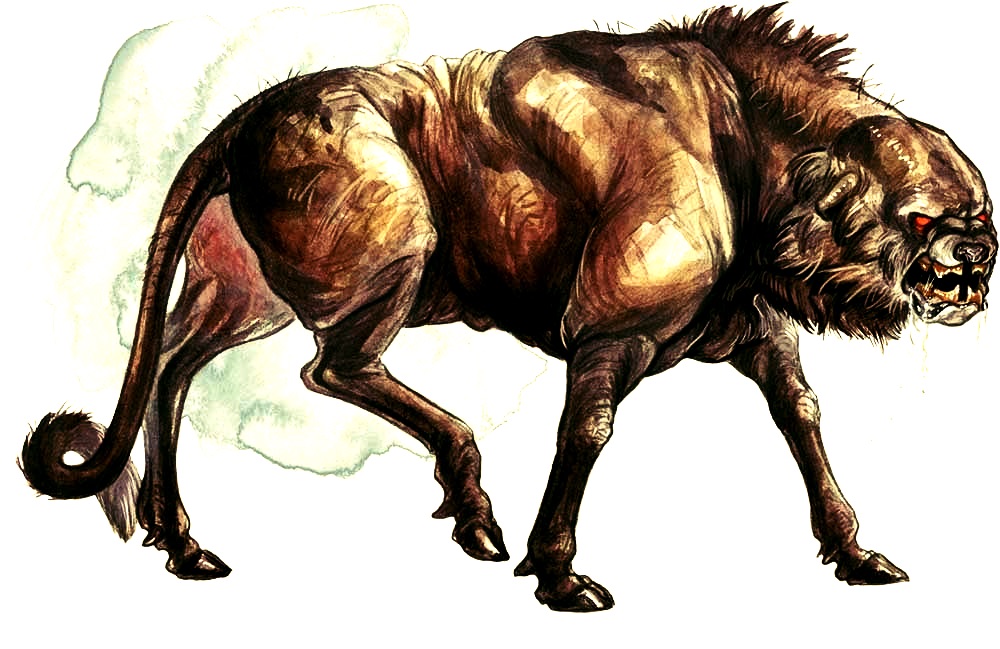
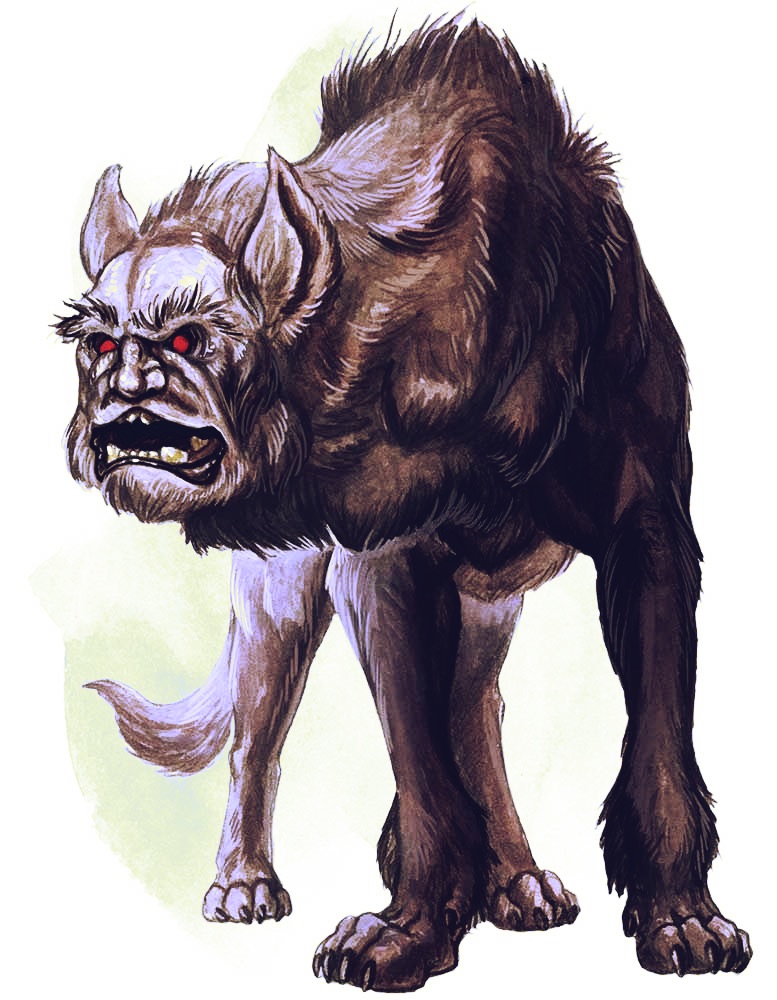
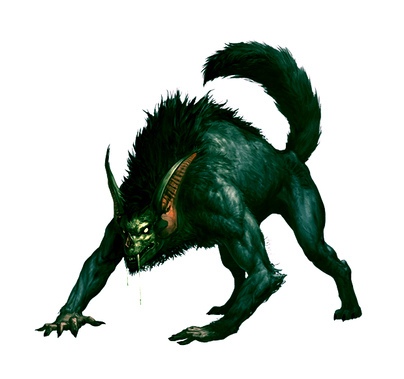
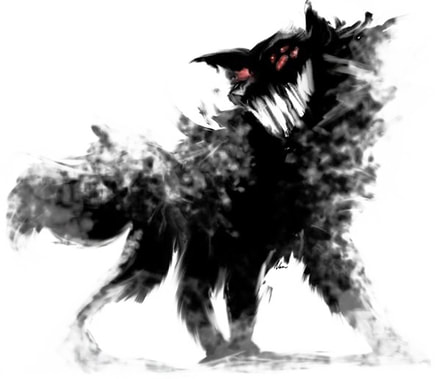
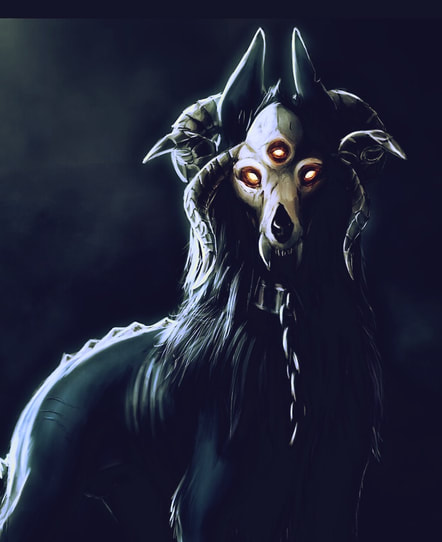
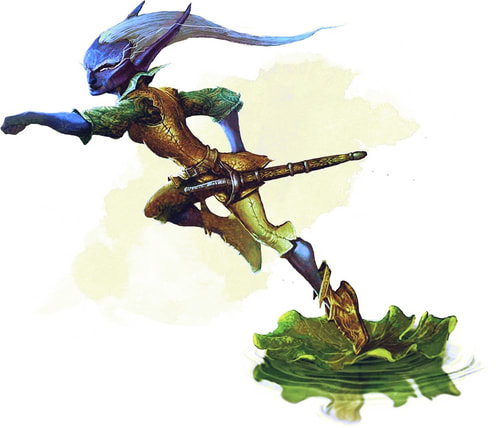
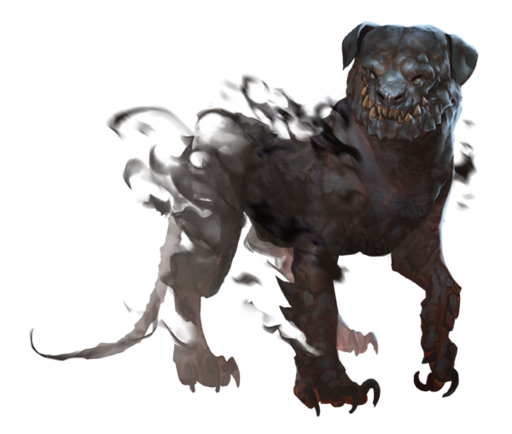
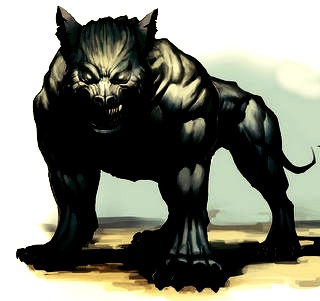
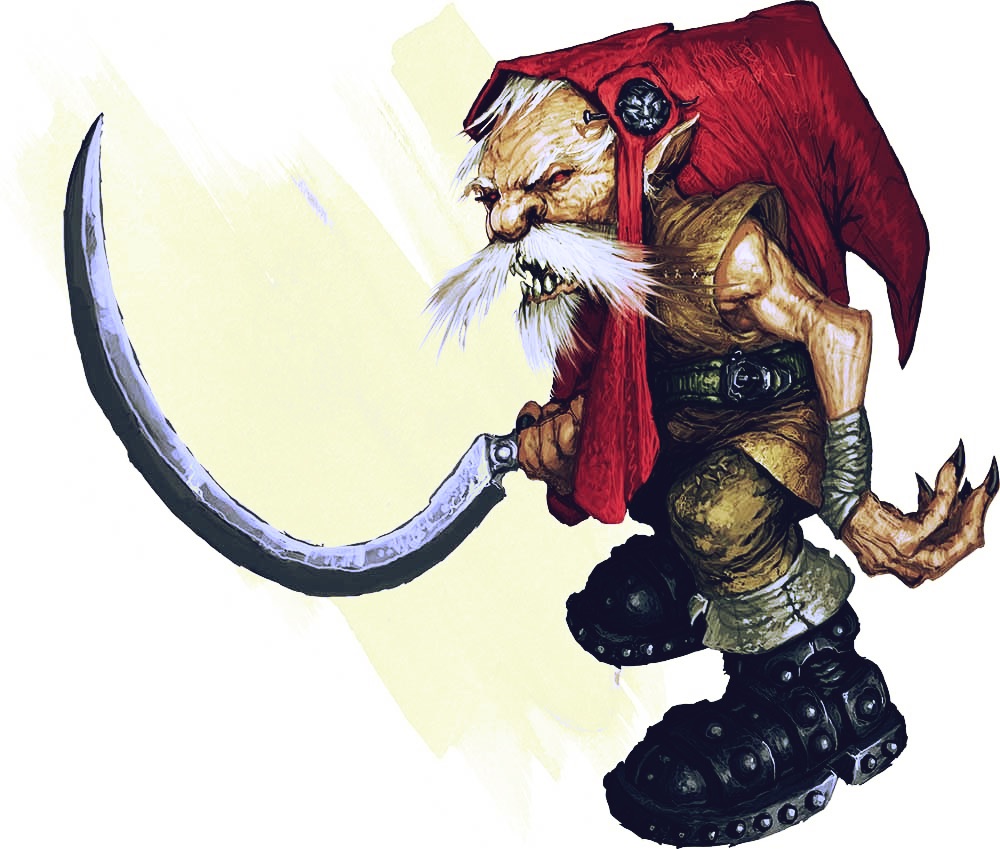
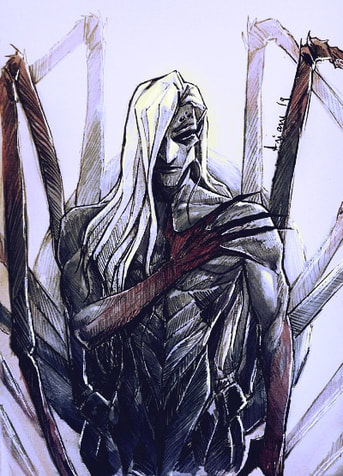
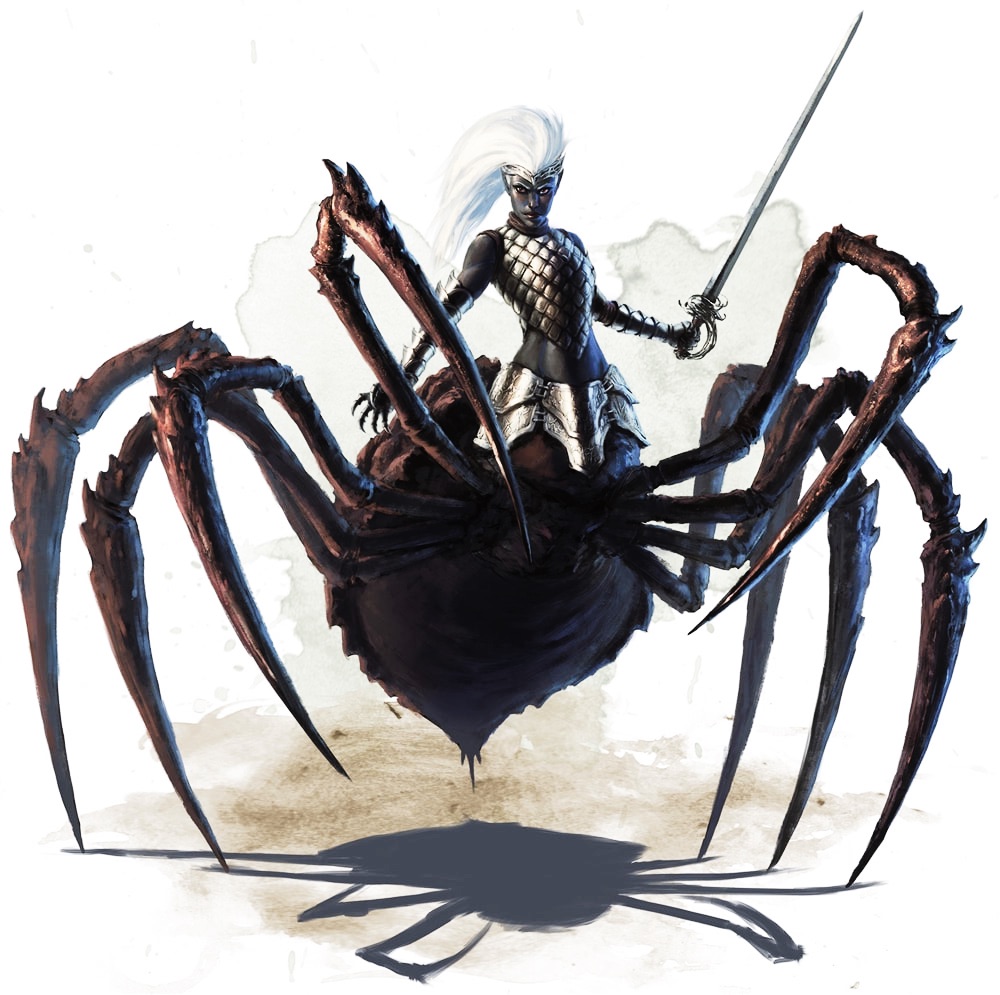
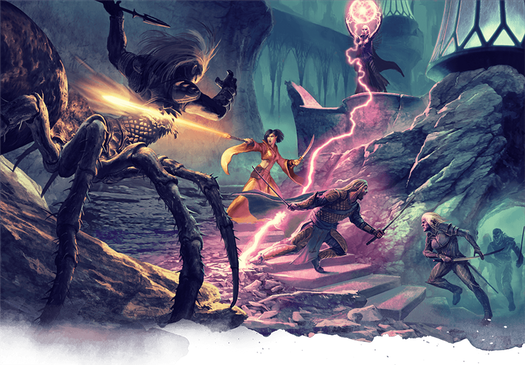
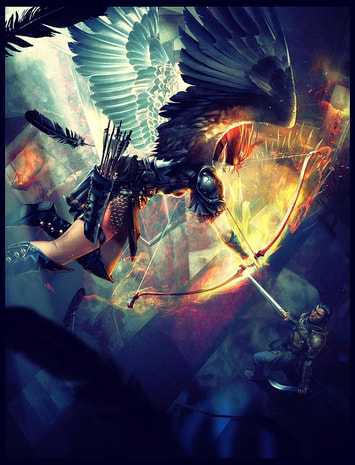
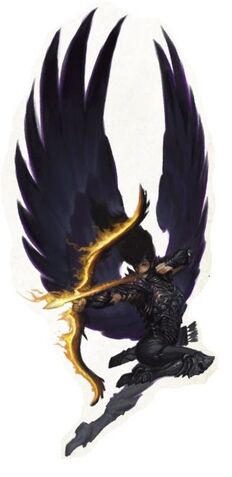
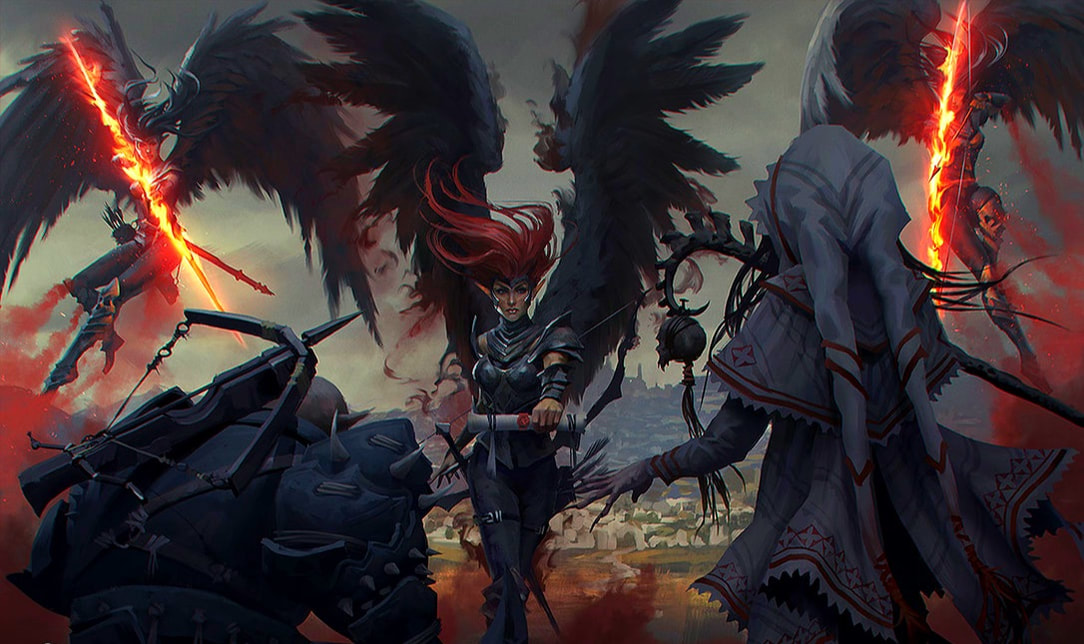
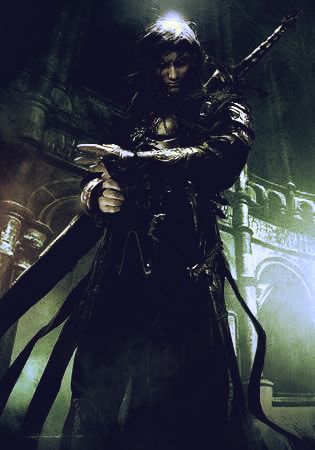
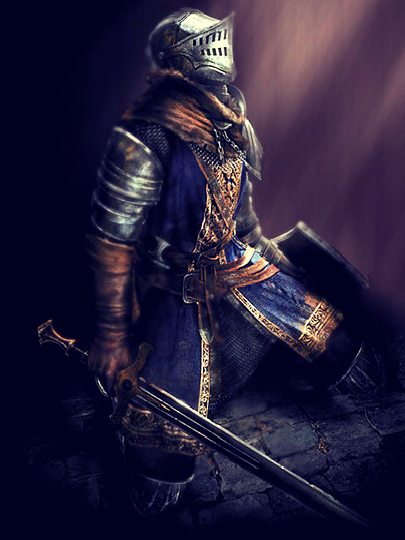
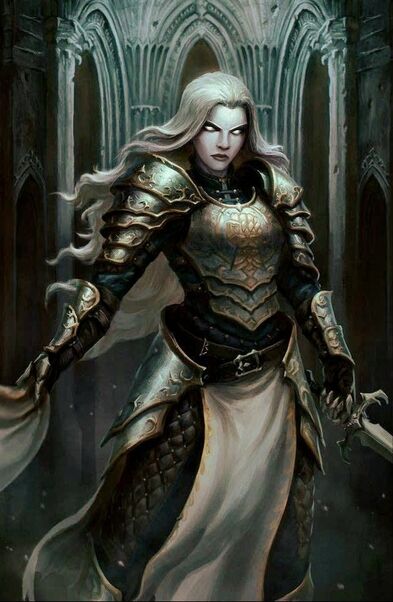
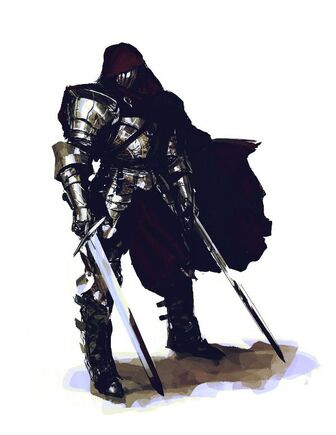
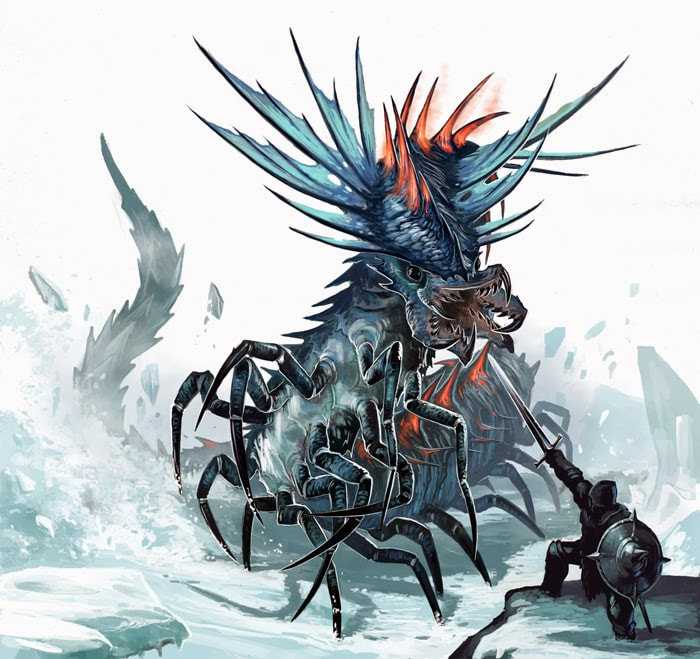
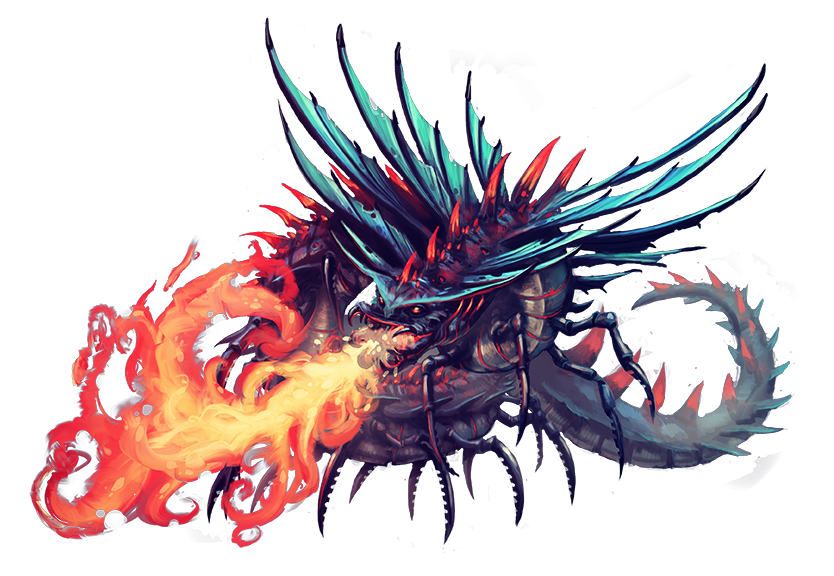
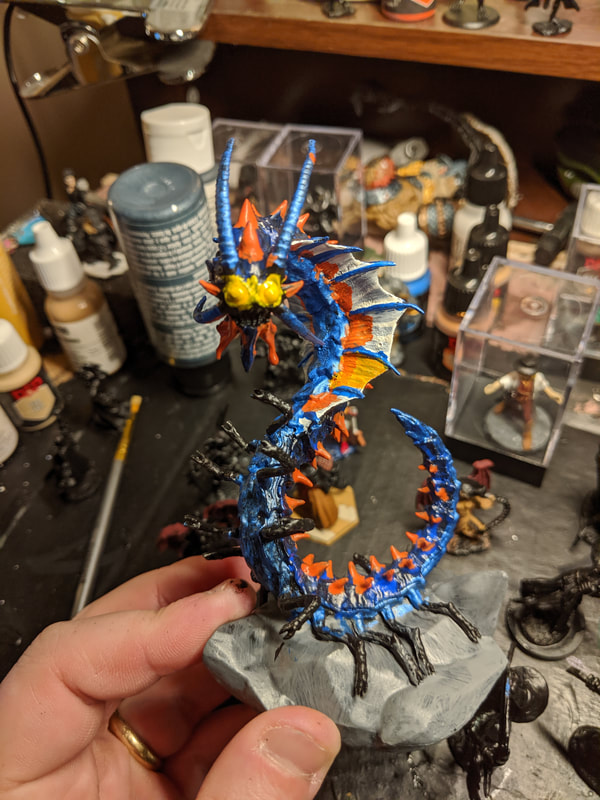
 RSS Feed
RSS Feed